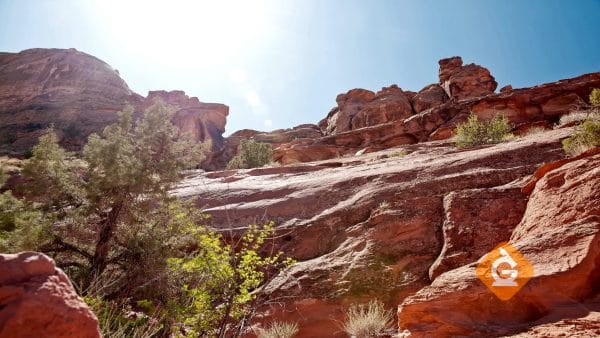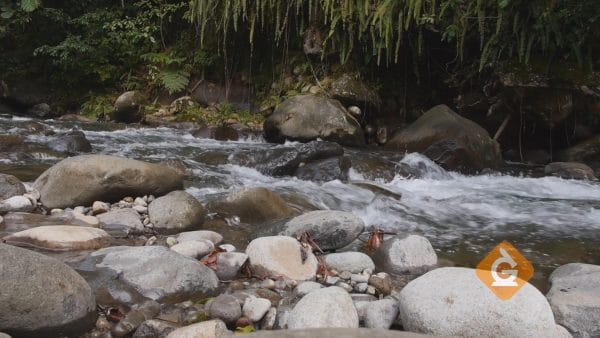The spheres are the four subsystems that make up the planet Earth. They are called spheres because they are round, just like the Earth. The four spheres are the geosphere (all the rock on Earth), hydrosphere (all the water on Earth), atmosphere (all the gases surrounding Earth), and biosphere (all the living things on Earth).
To better understand how the 4 spheres of the Earth work….
LET’S BREAK IT DOWN!
Earth’s land makes up the geosphere.

Geo means “earth.” The Earth’s geosphere (sometimes called the lithosphere) is the portion of the earth that includes rocks and minerals. It starts at the ground and extends all the way down to Earth’s core.
We rely on the geosphere to provide natural resources and a place to grow food. Volcanos, mountain ranges, and deserts are all part of the geosphere. Put simply, without the geosphere, there would be no Earth!
Earth’s water makes up the hydrosphere.

Hydro means “water.“ The hydrosphere includes the oceans, rivers, lakes, groundwater, and water frozen in glaciers. 97% of water on Earth is found in the oceans. Water is one of the most important substances needed for life and makes up about 90% of living things. Without water, life would not be possible.
Earth’s air makes up the atmosphere.

Atmos means “air.” The atmosphere includes all the gases surrounding the Earth. We often call the atmosphere "air." All planets have an atmosphere, but Earth is the only planet with the correct combination of gases to support life.
The atmosphere consists of five layers and is responsible for Earth’s weather. Even though it seems like air is made of nothing, it consists of particles too small to be seen. All these particles have weight that push down on Earth. The weight of air above us is called air pressure.
Earth’s living things make up the biosphere.

Bio means “life.” The biosphere is made up of all the living things on Earth and it includes fish, birds, plants, and even people.
The living portion of the Earth interacts with all the other spheres. Living things need water (hydrosphere), chemicals from the atmosphere, and nutrients gained by eating things in the biosphere.

































































































































 Select a Google Form
Select a Google Form









